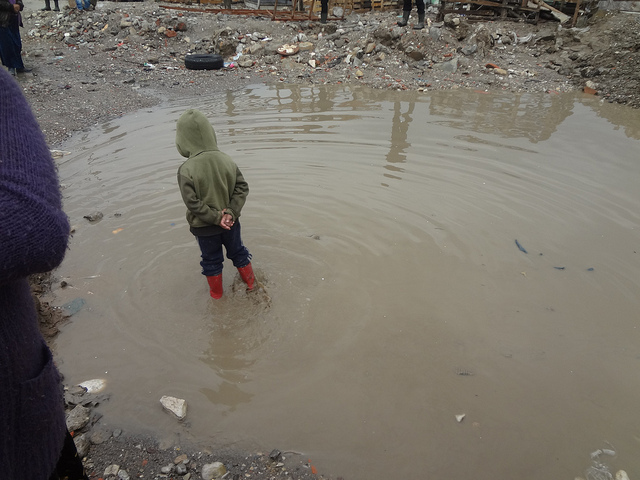Save the Children’s Emergency Response to the most Affected Roma Community
The most vulnerable and affected people from this flooding come from two Roma community settlements. These two settlements house around 300 people, including 140 children, who live in makeshift plastic tents near the Buna River. These tents are fully inundated and destroyed. People have also lost their clothes, bedding and household goods. Field partners report that during the peak of the flooding on April 8th, children felt very frightened.

Members of the two communities live in inadequate tents under extreme unsanitary conditions. The existing high water levels in the settlements present increased risks of infection and other health hazards. The communities remain unable to maintain their livelihoods and live with no income and with little food security. Children have been unable to attend regular schooling and kindergarten.
Save the Children is the only actor responding to the situation by providing members of the Roma communities with needed blankets, clothes and sanitary kits. Materials to repair damaged homes, disinfectants, gravel to fill water wholes and food items will be provided following a needs assessment conducted by Save the Children.
Beneficiaries express appreciation for the help provided so far: “We have received clothes, boots and blankets and we want to thank Save the Children. We have nowhere to live, nothing to eat and we are unable to ensure even our daily bread”- Dallendyshe, Roma community member, a beneficiary of the emergency response and Roma Inclusion project in Shkodra, supported by Save the Children. “I like going to school but had no clothes. Today, I was in school wearing my new and warm clothes. I’ll go every day. In class we learn, play and we feel so good”. Miranda, 8 year old Roma child, a beneficiary of the emergency response and Roma Inclusion project in Shkodra, supported by Save the Children. To ensure an adequate response and lobbying for ongoing support to the communities, Save the Children has engaged closely with local Municipal officials and the local Civil Emergency Committee. According to these local actors, they are unable to financially support the affected population and are seeking the support from organisations operating in the region.
Save the Children is collaborating closely with community members, local authorities and field partners to identify a durable and long-term holistic solution to the situation.
http://www.flickr.com/photos/savethechildrenal/sets/72157637805523065/
12/04/2013
 Albania
Albania